Greylag Goose
- February 20, 2024
- 0 comment
The Greylag Goose, scientifically known as Anser anser, is a prominent species of waterfowl found across various regions worldwide. Renowned for its striking appearance and distinct honking calls, this majestic bird inhabits a diverse array of habitats, including wetlands, lakes, rivers, and grasslands. With its characteristic grey plumage and vibrant orange beak, the Greylag Goose cuts a distinctive figure in its environment. These sociable creatures often form large flocks, exhibiting complex social behaviors and communication patterns. During the breeding season, they establish nesting territories and fiercely defend them against intruders.
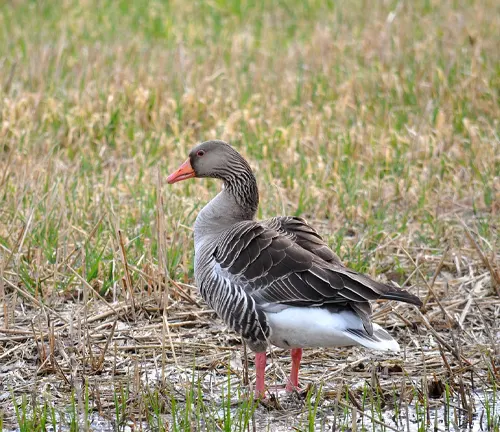
Greylag Geese are known for their seasonal migrations, traversing vast distances to find suitable breeding and feeding grounds. As herbivores, they primarily feed on vegetation such as grasses, grains, and aquatic plants, playing a crucial role in maintaining the balance of ecosystems. Despite their adaptability, Greylag Geese face various threats including habitat loss, pollution, and hunting pressure. Conservation efforts aimed at protecting their habitats and promoting sustainable management practices are essential for ensuring the long-term survival of this iconic species.
| Specifications | Details |
|---|---|
| Scientific Name | Anser anser |
| Common Name | Greylag Goose |
| Habitat | Wetlands, lakes, rivers, grasslands |
| Distribution | Europe, Asia, parts of North Africa |
| Plumage | Grey with lighter underparts |
| Beak Color | Orange |
| Size | Large |
| Social Behavior | Highly social, forms large flocks |
| Migratory Patterns | Seasonal migrations, V-shaped formations |
| Diet | Herbivorous, feeds on vegetation and aquatic plants |
| Breeding Season | Spring and summer |
| Nesting Habits | Builds nests near water bodies |
| Clutch Size | Typically 4-6 eggs |
| Conservation Status | Not endangered, faces threats from habitat loss, pollution, and hunting pressure |
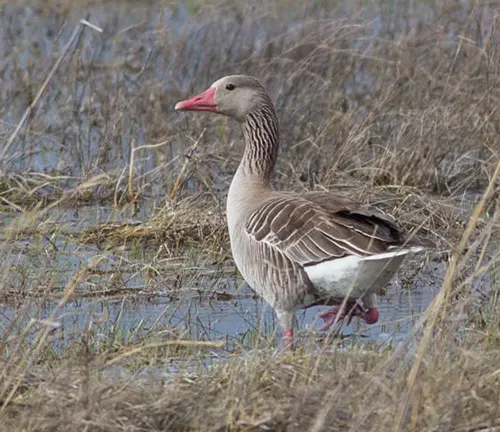
Greylag Goose, scientifically known as Anser anser, is one of the most recognizable species of geese found across the globe. These majestic birds are widely distributed and play significant roles in various ecosystems. Let’s delve deeper into the fascinating world of Greylag Geese.
Habitat and Distribution
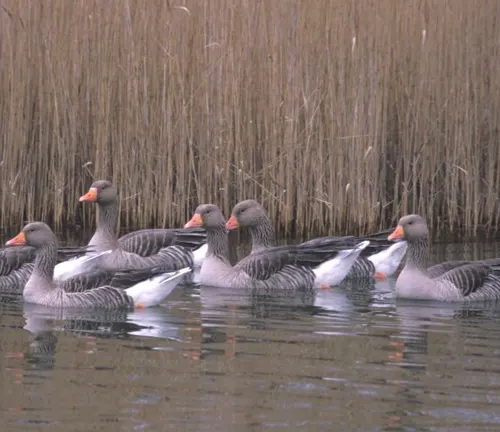

The Greylag Goose, or Anser anser, is a highly adaptable species found in a variety of habitats across the globe. These include wetlands, marshes, lakes, rivers, and grasslands. Their ability to thrive in diverse environments contributes to their widespread distribution. Greylag Geese are commonly found throughout Europe, Asia, and parts of North Africa. During migration, they travel long distances, often forming impressive V-shaped formations in the sky. This adaptability to different habitats and their extensive range make Greylag Geese a familiar sight in many regions around the world.
Physical Description
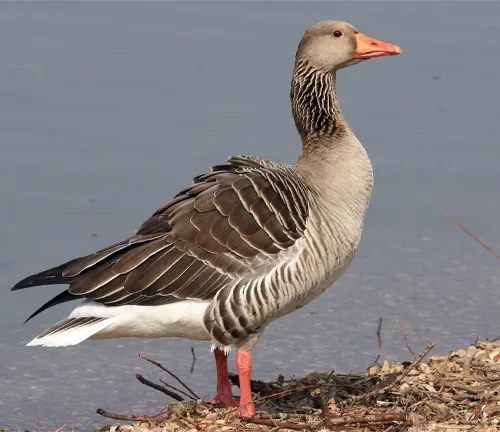
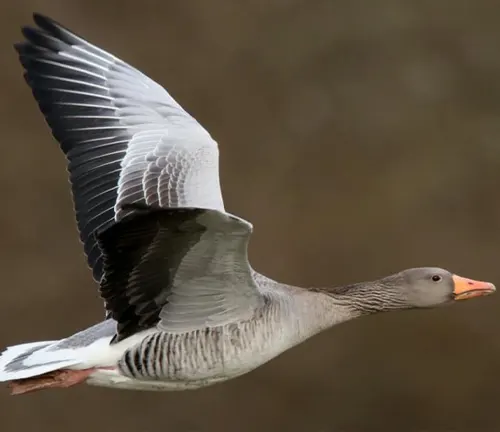
The Greylag Goose is characterized by its robust build and distinctive appearance. These large waterfowl typically have grey plumage with lighter feathers on their bellies. One of the most notable features of the Greylag Goose is its vibrant orange beak, which stands out against the backdrop of its grey feathers. They have long necks and legs, allowing them to forage efficiently both on land and in water. Their overall size and stature contribute to their impressive presence in their habitat. With their striking colors and imposing stature, Greylag Geese are easily recognizable among other bird species.
Behavior and Social Structure
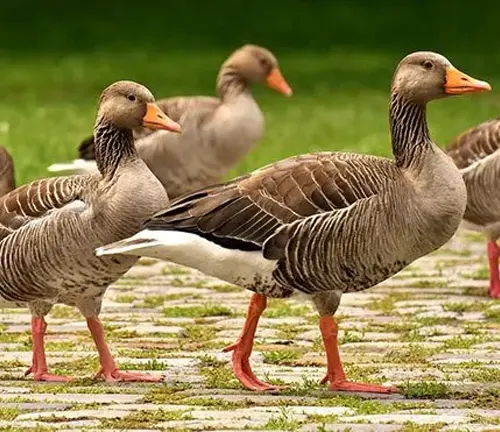
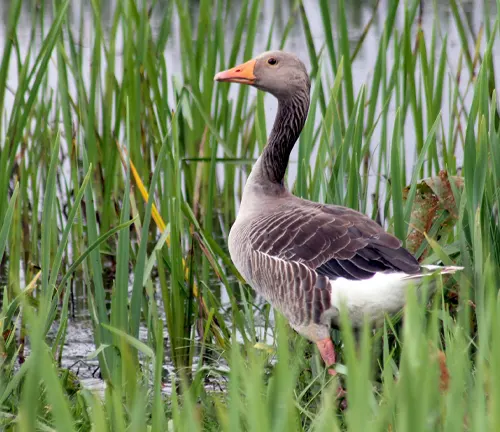
Greylag Geese are highly social creatures, exhibiting complex behaviors and forming strong bonds within their flocks. They are known to be highly vocal, with a range of honks, grunts, and other calls used for communication within the group. These birds often form large flocks, especially during migration and in their wintering grounds, where they can number in the thousands.
Within these flocks, Greylag Geese display intricate social structures. They establish hierarchies based on factors such as age, size, and reproductive status. During the breeding season, dominant individuals may assert their authority over nesting territories, while subordinate geese may form cooperative alliances to defend against intruders.
Despite their social nature, Greylag Geese can also exhibit aggression, particularly during territorial disputes or when defending their nests and young. They may engage in displays of aggression such as hissing, wing-flapping, and chasing off intruders.
Reproduction and Life Cycle
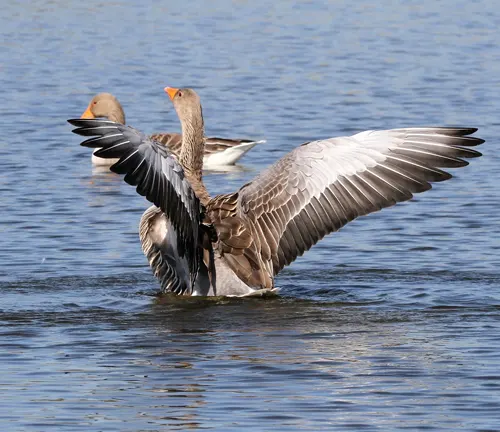
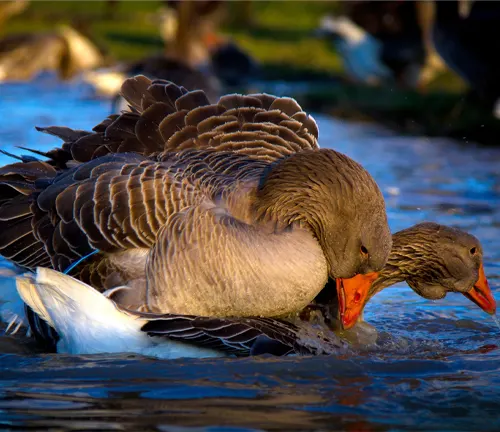
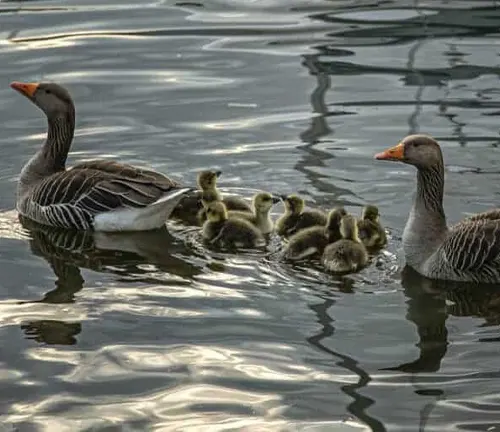
Breeding for Greylag Geese typically occurs in the spring and summer months. During this time, they establish nesting territories in secluded areas near water bodies, such as marshes or lakeshores. Mated pairs work together to build their nests using plant materials, feathers, and other debris.
Female Greylag Geese lay a clutch of eggs, usually ranging from 4 to 6, though clutch sizes can vary. Both parents take turns incubating the eggs, with the female primarily responsible during the day and the male taking over at night. This shared parental duty continues throughout the incubation period, which lasts approximately 28 to 30 days.
Once the eggs hatch, the goslings emerge as precocial birds, meaning they are relatively mature and mobile shortly after birth. They are covered in down feathers and are capable of walking, swimming, and foraging for food almost immediately. The parents guide and protect the goslings, teaching them essential skills such as feeding and avoiding predators.
Diet and Feeding Habits
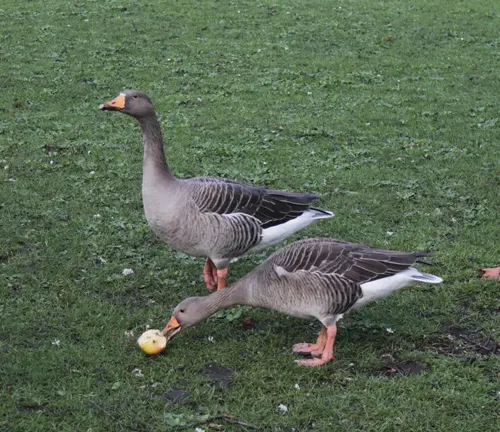

Greylag Geese are primarily herbivorous, feeding on a variety of vegetation throughout their range. Their diet consists mainly of grasses, sedges, and other terrestrial plants, which they graze on both on land and in shallow water. They are also known to consume a variety of aquatic plants, including algae, pondweed, and water lilies.
During the breeding season, Greylag Geese may supplement their diet with protein-rich food sources such as insects, snails, and small crustaceans. These additional food items are especially important for breeding pairs, as they provide the necessary nutrients for egg production and chick rearing.
Greylag Geese are well adapted to foraging in both terrestrial and aquatic environments. They use their strong bills to graze on grasses and pluck vegetation from the water’s surface. They may also dive underwater to reach submerged plants and forage for food in shallow mudflats.
Their feeding habits can have significant ecological impacts, particularly in wetland habitats where they are abundant. By grazing on vegetation, Greylag Geese help regulate plant growth and maintain the balance of aquatic ecosystems. Additionally, their droppings serve as natural fertilizers, enriching the soil and promoting plant growth.
Importance in Ecosystem

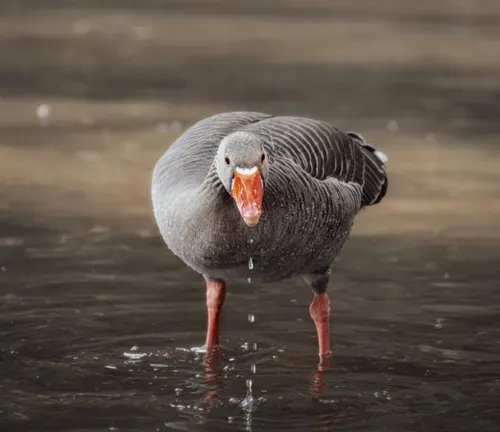
Greylag Geese play crucial roles in maintaining the health and balance of the ecosystems they inhabit. As herbivores, they have a significant impact on vegetation dynamics, particularly in wetland habitats where they are often abundant.
One of the key ecological functions of Greylag Geese is their role in controlling plant growth. By grazing on vegetation, they help prevent overgrowth of certain plant species, which can otherwise choke waterways and reduce habitat quality for other organisms. This grazing behavior also creates open spaces and patches of bare ground, which are important for the establishment of diverse plant communities and provide habitat for a variety of invertebrates and small mammals.
Additionally, the droppings of Greylag Geese serve as natural fertilizers, enriching the soil with nutrients such as nitrogen and phosphorus. This nutrient input can stimulate plant growth and productivity, further enhancing the overall biodiversity and ecological functioning of the ecosystem.
Conservation Status
The conservation status of Greylag Geese varies depending on their geographical location and population trends. Overall, Greylag Geese are not currently considered endangered, with stable or increasing populations in many parts of their range.
However, like many bird species, Greylag Geese face various threats that can impact their populations and habitats. Habitat loss and degradation, primarily due to agricultural expansion, urban development, and drainage of wetlands, pose significant challenges to these birds. Pollution of waterways and habitat disturbance from recreational activities can also negatively impact their breeding and foraging habitats.
Interactions with Humans
Greylag Geese have a long history of interactions with humans, both positive and negative, due to their widespread distribution and adaptability to various habitats. These interactions can have significant implications for both the geese and human communities.
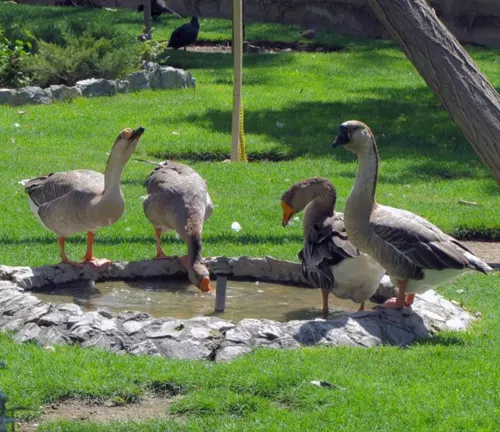
One common interaction between Greylag Geese and humans occurs in urban and suburban areas, where these birds may congregate in parks, golf courses, and other green spaces. While some people enjoy observing and feeding the geese, others may view them as pests due to their propensity to graze on lawns, damage crops, and create messes with their droppings.
Symbolism and Cultural Significance
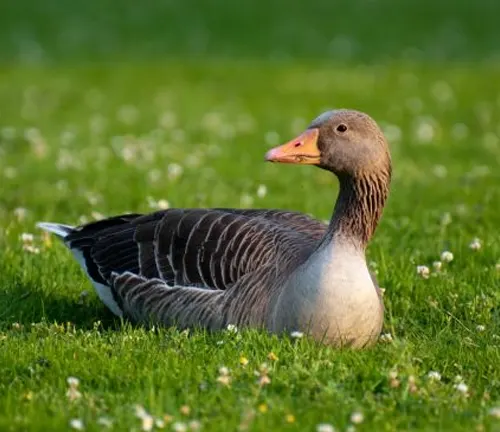
Greylag Geese hold significant symbolism and cultural importance in various societies around the world. Throughout history, these majestic birds have been revered and celebrated for their grace, beauty, and symbolic meanings.
In many cultures, Greylag Geese are associated with concepts such as migration, freedom, and loyalty. Their seasonal migrations, often spanning vast distances, symbolize endurance, resilience, and the cyclical nature of life. These epic journeys have inspired awe and admiration among people, who see in the geese a reflection of their own journeys and aspirations.
In folklore and mythology, Greylag Geese feature prominently as characters in stories and legends. They are often depicted as symbols of fidelity and monogamy, with tales of geese forming lifelong bonds with their mates and remaining loyal to them throughout their lives. In some cultures, Greylag Geese are even believed to mate for life, further reinforcing their association with love and commitment.
Challenges and Threats
Despite their adaptability and resilience, Greylag Geese face numerous challenges and threats that pose risks to their populations and habitats.
One of the primary challenges is habitat loss and degradation, resulting from factors such as urbanization, agricultural expansion, and drainage of wetlands. As natural habitats are converted for human use, Greylag Geese may lose critical breeding and feeding grounds, forcing them to seek alternative habitats that may be less suitable or available.
Pollution of waterways and habitat disturbance from human activities also present significant threats to Greylag Geese. Contamination of water sources with pollutants such as pesticides, heavy metals, and industrial chemicals can impact water quality and affect the health of both geese and their prey species. Habitat disturbance from recreational activities, construction projects, and other human disturbances can disrupt nesting and foraging behaviors, leading to decreased reproductive success and population declines.
Different Species
Anser anser anser
This is the nominate subspecies of the Greylag Goose, found in Europe and western Asia. It is the largest and most common subspecies, with grey plumage and orange beak.
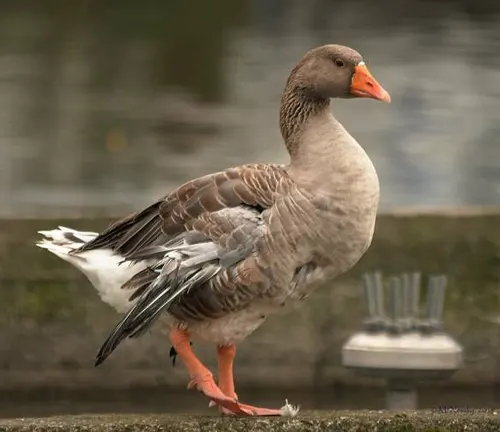

Anser anser rubirostris
Also known as the Eastern Greylag Goose, this subspecies breeds in eastern Europe and Asia. It is similar in appearance to the nominate subspecies but may have a slightly lighter plumage coloration.
Anser cygnoides
The Swan Goose, while not a true subspecies of the Greylag Goose, is closely related and sometimes considered conspecific. It is native to East Asia and is distinguished by its larger size, black markings on the head and neck, and orange bill with a prominent knob at the base.
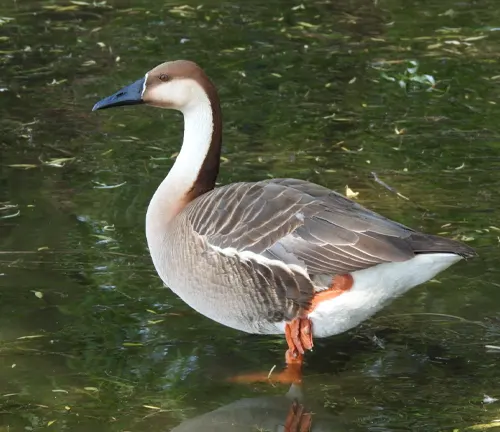

Anser indicus
The Bar-headed Goose is another species closely related to the Greylag Goose. It breeds in Central Asia and migrates over the Himalayas to wintering grounds in the Indian subcontinent. It has a distinctive barred pattern on its neck and a pale orange bill.
Anser albifrons
The White-fronted Goose, while not closely related to the Greylag Goose, is sometimes grouped together with it in the genus Anser. It breeds in the Arctic regions of North America and Eurasia and has a characteristic white patch on the front of its head.
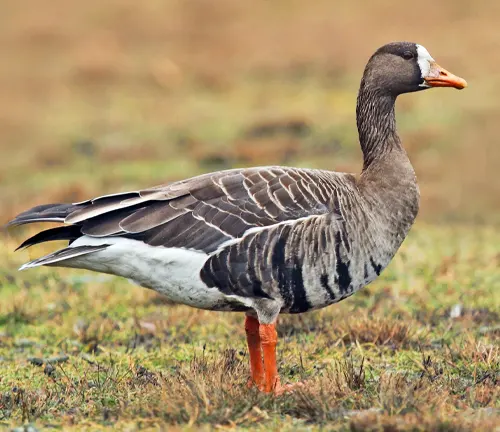
Frequently Asked Questions (FAQs)
- What do Greylag Geese eat?
Greylag Geese are primarily herbivorous, feeding on a variety of vegetation including grasses, grains, and aquatic plants. - How long do Greylag Geese live?
On average, Greylag Geese have a lifespan of around 10 to 15 years in the wild, although some individuals can live longer in captivity. - Where do Greylag Geese migrate to?
Greylag Geese undertake long-distance migrations, traveling from their breeding grounds in northern Europe and Asia to wintering areas in southern Europe, North Africa, and parts of Asia. - How do Greylag Geese communicate?
Greylag Geese communicate through a variety of vocalizations including honks, grunts, and hisses, as well as visual displays such as wing-flapping and head-bobbing. - Do Greylag Geese mate for life?
While Greylag Geese are known to form strong pair bonds, they do not always mate for life. However, many pairs remain together for multiple breeding seasons. - What predators do Greylag Geese have?
Greylag Geese are preyed upon by a variety of predators including foxes, coyotes, eagles, and other birds of prey, as well as mammals such as raccoons and mink. - How many eggs do Greylag Geese lay?
Female Greylag Geese typically lay a clutch of 4 to 6 eggs, although clutch sizes can vary depending on factors such as age and environmental conditions. - Do Greylag Geese nest in colonies?
Greylag Geese often nest in loose colonies, with several pairs nesting in close proximity to one another. However, they may also nest solitarily in secluded areas. - Do Greylag Geese have any cultural significance?
Yes, Greylag Geese have cultural significance in various societies, appearing in folklore, myths, and literature as symbols of loyalty, migration, and freedom. - How can I identify a Greylag Goose?
Greylag Geese are characterized by their grey plumage, orange beak, and large size. They also have a distinctive honking call that helps to identify them in the wild. - Are Greylag Geese aggressive towards other bird species?
Greylag Geese may display territorial behavior towards other bird species during the breeding season, but they are generally not aggressive towards other birds unless provoked.


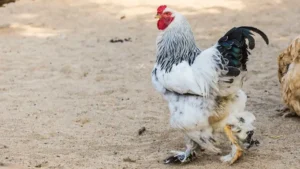
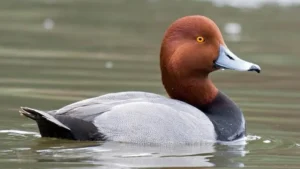
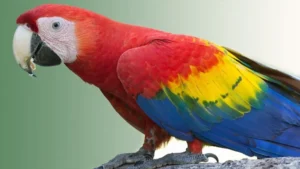
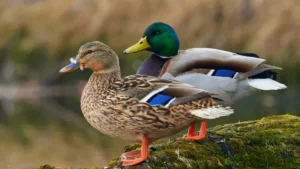
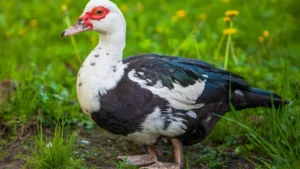
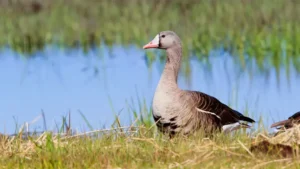
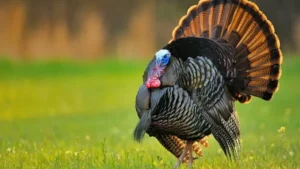
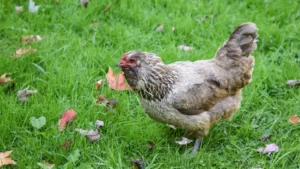


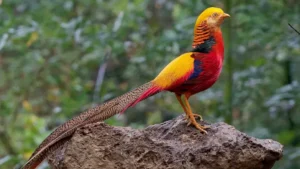
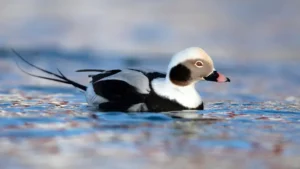
Leave your comment